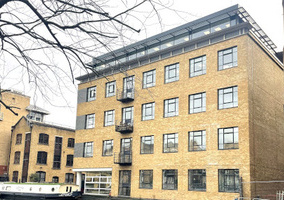Charities that own land are more likely to survive, particularly those which operate in more deprived areas, according to new research.
Social Investment Business (SIB) found that 41% of charities in the most deprived areas of England own land, compared to 28% of those in the least deprived areas.
Based on analysis of Charity Commission data of more than 146,000 charities, it found that the proportion of ownership is higher in poorer areas, but the number of charities formed is roughly the same across different regions.
“That means the same number of charities are founded, but the survivors in poorer areas are much more likely to own a building or land,” it said.
“That is, we found that owning land is correlated strongly with charity survival, and this holds particularly true when deprivation levels increase.”
Asset ownership ‘much more important’ in deprived areas
SIB compared the Commission data with the Index of Multiple Deprivation (IMD) deciles, which rank areas by deprivation from one (most deprived) to 10 (least deprived).
An SIB article on the findings reads that as deprivation falls, the percentage of charities owning land also falls “indicating the importance of asset ownership in marginalised communities”.
“There is a strong correlation between land ownership, and charity survival rates,” it said.
“From our data charities that have registered have done so in equal numbers and with equal likelihood of owning land regardless of deprivation.
“However, as charities age, those that survive are more likely to have assets or operate in more affluent areas.
“This means that owning an asset is much more important for survival in more deprived areas.”
Greater financial stability
SIB said it is likely that owning land leads to greater financial stability for charities as they can generate revenue through rent and room hire, partner with local businesses and their local authority, and have greater capacity for public sector contracting.
“In addition, they can secure loans against their assets, providing additional flexibility and scope for investment and forward planning,” it said.
“Owning assets also cuts costs, saving on rent, which can increase stability.”
SIB suggested that struggling local authorities should “divest” their land “into community hands”.
“This would safeguard important local services in the communities that need them most and would provide a longer term saving to the state through crucial youth work, childcare, healthcare, mental health support, employability support and civic power,” it said.
Locality: Asset ownership shields charities from rent hikes
Tony Armstrong, chief executive of Locality said: “Community ownership of land and buildings is key to creating strong communities and delivering local services – from healthcare to housing.
“Ownership of assets enables many Locality members to generate income and provides stability, shielding them from rent hikes.
“Put simply – asset ownership puts local people and organisations in charge of their own future.
“That is why we have championed investment in community asset ownership, which came in part through the Community Ownership Fund.
“As a support provider in this programme, we have seen first-hand the scale of interest in community ownership, and the huge need for this funding.”
Related Articles












